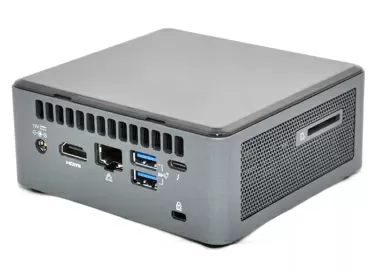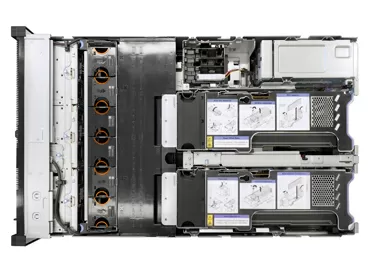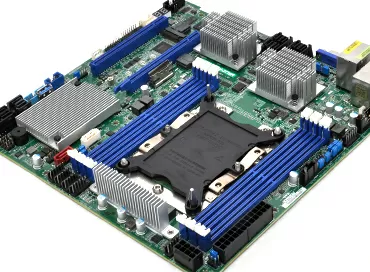Intel Xeon D-1600 processor family
We first got acquainted with the Broadwell-DE series processors in 2015. Now, four years after the initial release of this series of SoCs, Intel is releasing the 1600 Xeon D processor line, and in this article, we will discuss what's new in these processors.
Intel Xeon D-1600 Family
Let's see: Intel Xeon D-1600 is a Xeon D-1500 NS with higher frequencies. The architecture, by and large, remained the same as in the Xeon D-1500 NS processors, where the NS prefix means the presence of 4 network controllers with a speed of 10 Gbps.
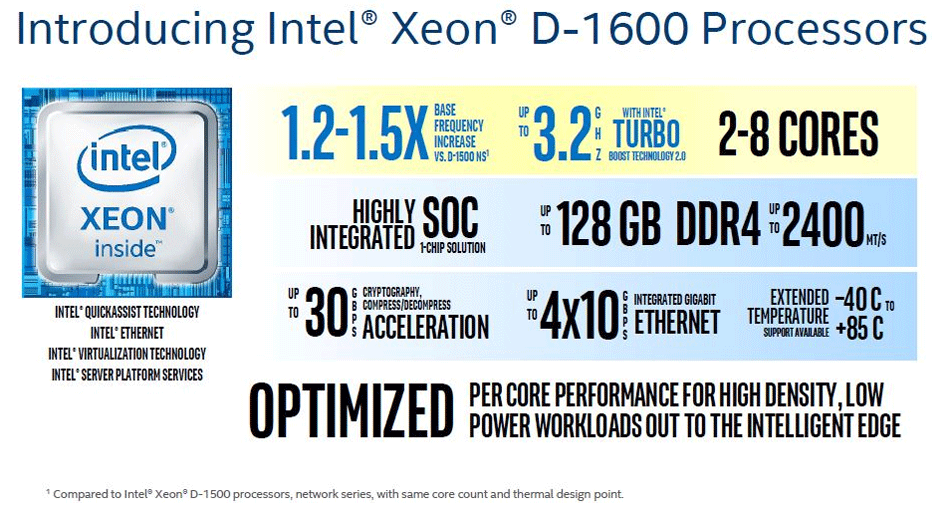
When developing the Xeon D-1600 processors, Intel had a small TDP margin, which the company spent on increasing core frequencies, not on their number. This means that the processors will have from 2 to 8 cores with frequencies up to 2.9 GHz in normal mode and up to 3.2 GHz in Turbo mode.
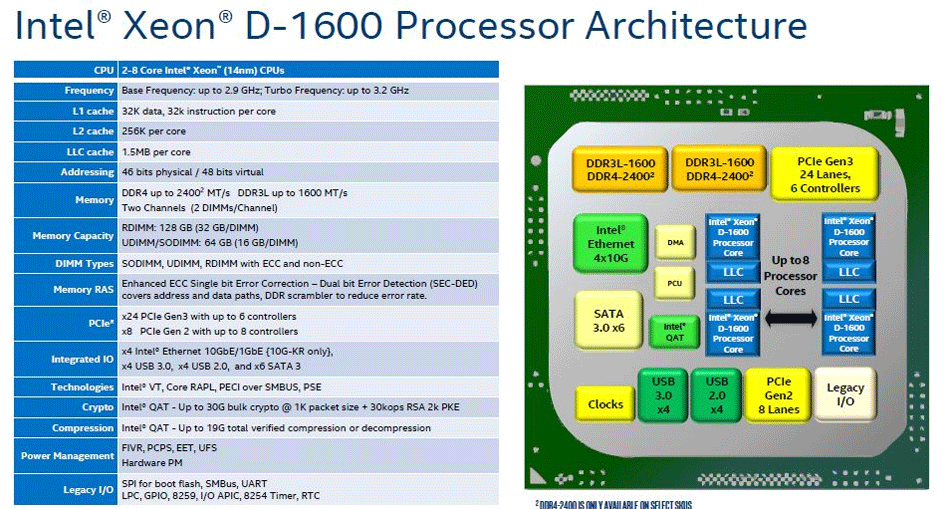
Since this is still the same Broadwell-DE architecture, it uses a 14 nm process technology with 24 PCI Express 3.0 and 8 PCI Express 2.0 lines, as well as 6 SATA-600 ports. DDR4 support is limited to 2400 GHz. That is, in sui, these are the same processors from 2015, but with support for QAT acceleration.
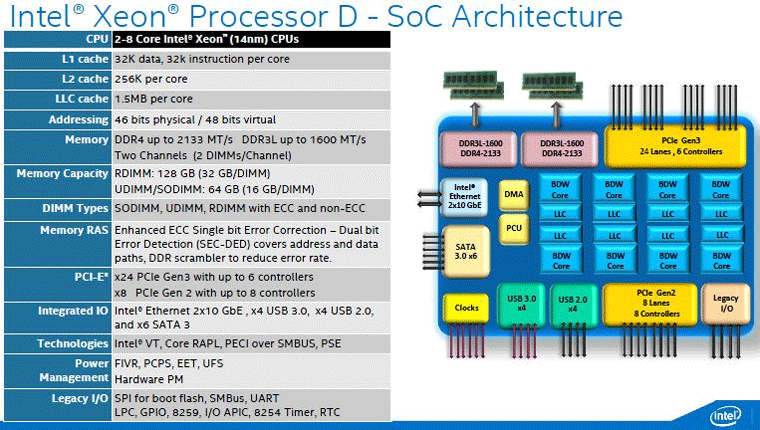
Of course, the Xeon D-2100 has higher performance and scalability, but it also consumes more power.
Cooling is not enough for this processor, so its use in cold network devices is limited. But at the same time, since Xeon D processors are not sold separately, the D-2100 series, due to the larger number of cores, is better suited for universal gateways that combine a NAS + VPN gateway in one device for a small company. Officially, Intel sees the prospects for the Xeon D upgrade as follows:
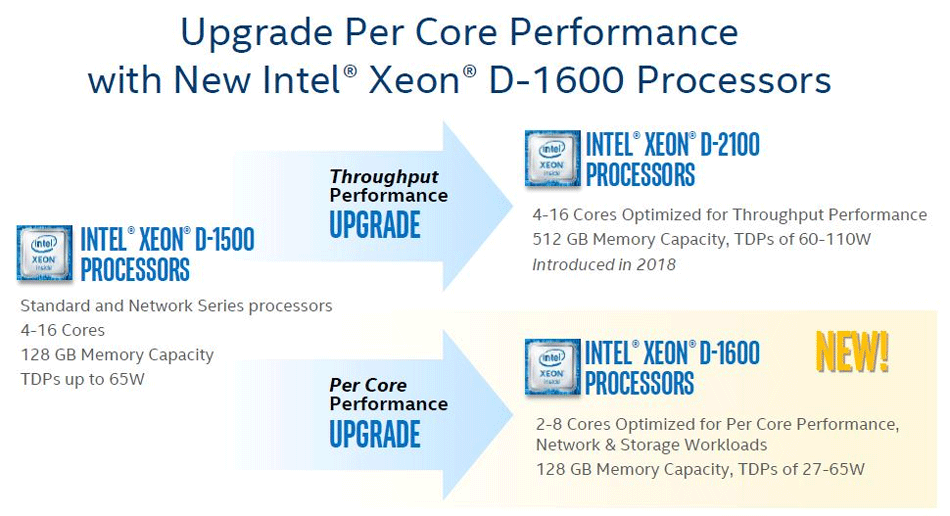
As you can see, the new Intel Xeon D-1600 is already targeting the low power area where Atom C3000 processors are used.
QuickAssist Technology (QAT) Support
Since the Intel Xeon D targets the communications sector, the processors support hardware encryption and compression offloading (QAT).
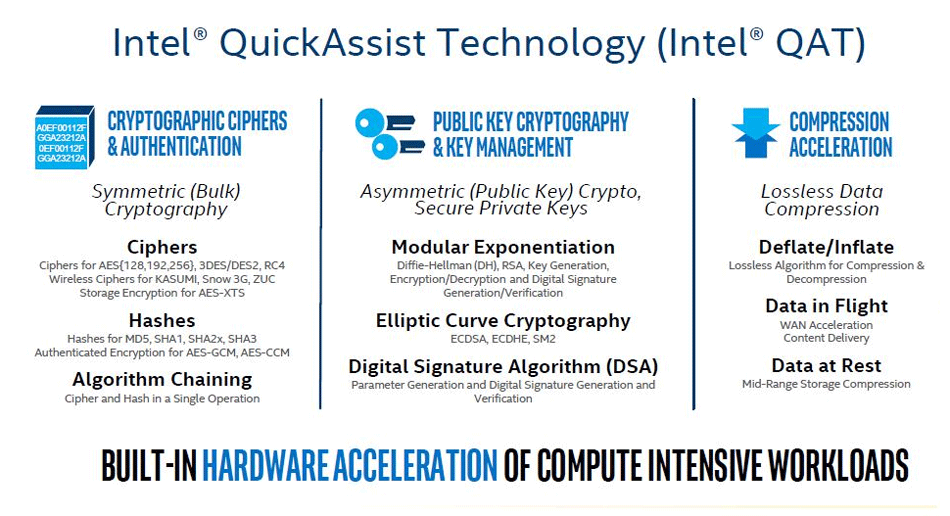
Here are some official benchmarks from Intel:
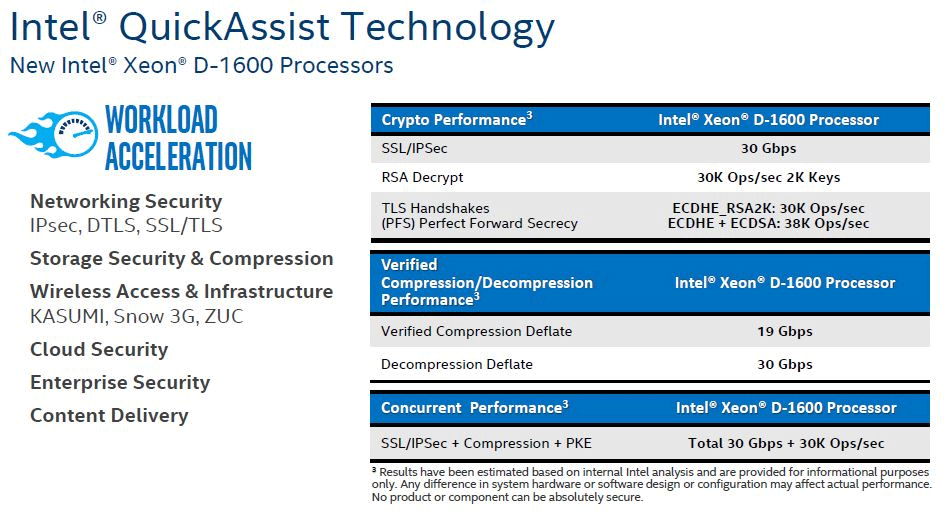
Keep in mind that not all Intel QAT versions work the same way, and the first revisions introduced in the Intel Atom C2000 differ from those used today in the Broadwell architecture.
Models and prices
The new Intel Xeon D-1600 processors are electrically compatible with the Xeon D-1500 NS, which means that the current motherboard design can be used with new CPUs without modification.
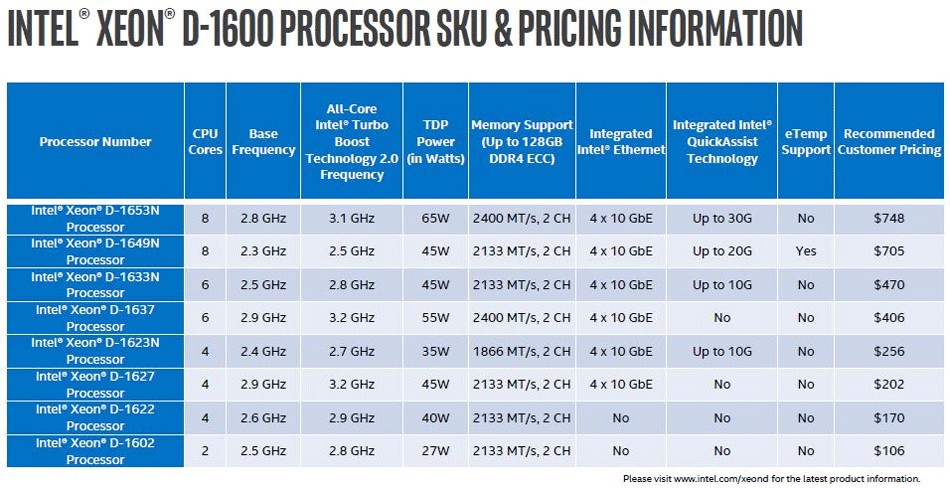
This is what the industry has long been expecting from Intel. Many edge applications simply don't need more than 8 cores and support for Skylake instructions (like AVX-512.). With the Xeon D-1500 series processors, users have always made a compromise due to the low clock frequency of the cores, and this gap was first closed in the expensive Xeon D-2100 series, and now in the more affordable Xeon D-1600.
The processor will be on sale in Q2 2019 and will remain in Intel's lineup for a long time.
Mikhail Degtyarev (aka LIKE OFF)
03/04.2019









